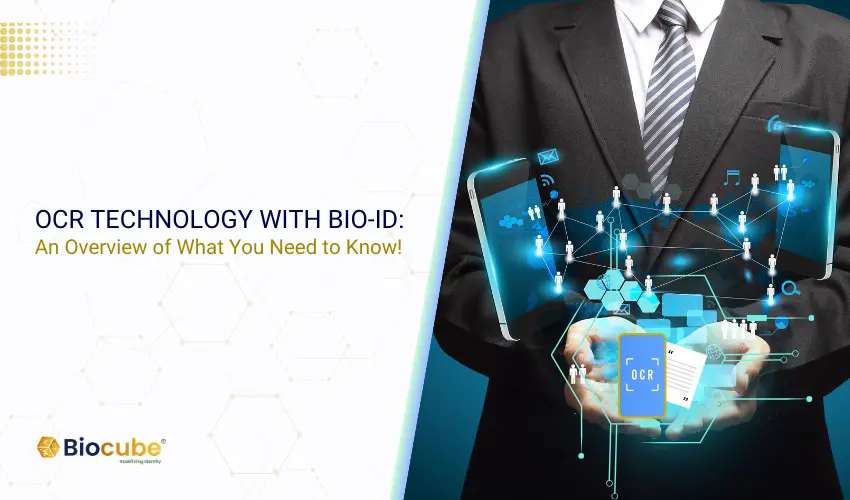
Optical Character Recognition is a new-age technology that is becoming popular across industries. It facilitates the digitization of documents and reduces workload while providing data accuracy.
According to a report, the OCR market was valued at $12.56 billion in 2023 and will have a CAGR of 14.8% between 2023 and 2030. The report also mentions that the growth in the APAC market will be 17.3% during the same period.
The technology is spreading vastly across BFSI, Education, Government, Manufacturing, Retail, and many other industries, with massive growth in the BFSI sector. Moreover, the North American Market Revenue Share of this technology reached a scale of 37% in 2023.
Must Read: Benefits of Using Biometric Multifactor Authentication
Table of Contents
What is OCR Technology?
OCR Technology is the extraction of text from physical documents or pictures and converting them into digital formats. If you have printed spreadsheets, the usage of Character Recognition technology can easily enable you to convert them into an Excel sheet.
Similarly, you must have noticed that nowadays, your information gets prefilled when you upload your resume to a site. The same happens when you create an online account, and it asks for a document such as an address or ID proof. It is all a result of this technology.
So, the end user saves time, and the organization avails the advantage of better customer experience, faster onboarding, and higher credibility. Beyond this, character detection enables enterprises to enjoy many other benefits.
How Does OCR Work?
Character Recognition Technology works through the pre-storage of characters and training for recognizing the characters through scanning, taking a picture, or making a video. Once the training finishes, the system can identify the characters after analyzing the document and matching them with the stored data. The data includes symbols, numbers, alphabets, or other commonly used characters.
The Must-Know Benefits of OCR
Ensures Data Credibility
The critical advantage of Optical Character Recognition technology is that it helps to ensure data accuracy. It is more credible than physically entering information into a system. Moreover, training in such a technology is rigorous to ensure that it can recognize discrepancies in the data. In case it doesn’t identify the characters, it will either leave the field blank or input the closest match, which the end user can manually correct.
Data Validation
The growing risk of identity theft and fraud has made it essential for organizations to adopt new technologies like Optical Character Recognition. Besides prefilling information during the onboarding process, it also facilitates matching data with existing databases for verification and validation. For example, the characters can be matched on a physical government ID with a digital one. It allows the validation of identity proof or address proof.
Faster Processing
Data entry is a time-consuming and tedious process; however, Optical Character Recognition makes it instantaneous. The technology takes a few seconds, ideally between 5-10 seconds, depending on many factors, and creates an online document or prefill columns. Nowadays, it is being used in many software applications to decrease workloads and make everyday data entry tasks smoother.
The Usage of Optical Character Recognition in BIo-IDs
Biometric identities or bio-IDs have also become popular due to the vast advantages they offer in terms of security and convenience. The usage of Optical Character Recognition with bio-IDs makes account opening and validation much easier.
The digital biometrics match a person’s photo from a document with the one in the government record, while the Character detection Technology prefills the characters mentioned in the digital columns. So, both technologies work side by side and ease the burden, as well as the security and convenience of the end user.
Conclusion
Optical Character Recognition can provide a vast number of advantages, such as faster user onboarding, higher data accuracy, data validation, and more. It accelerates the pace of processing information and saves time for the hired resources.
The usage of this technology is spreading across industries, especially BFSI, and its market size is expected to grow tremendously in the coming years. When combined with biometrics and other technologies, it makes systems even more efficient.
Biocube’s Patented Technology Solutions also incorporate OCR, passive liveness detection, multifactor biometrics, contactless authentication, and much more. Get in touch with us to implement our state-of-the-art solutions at your enterprise and scale up business efficiency.
